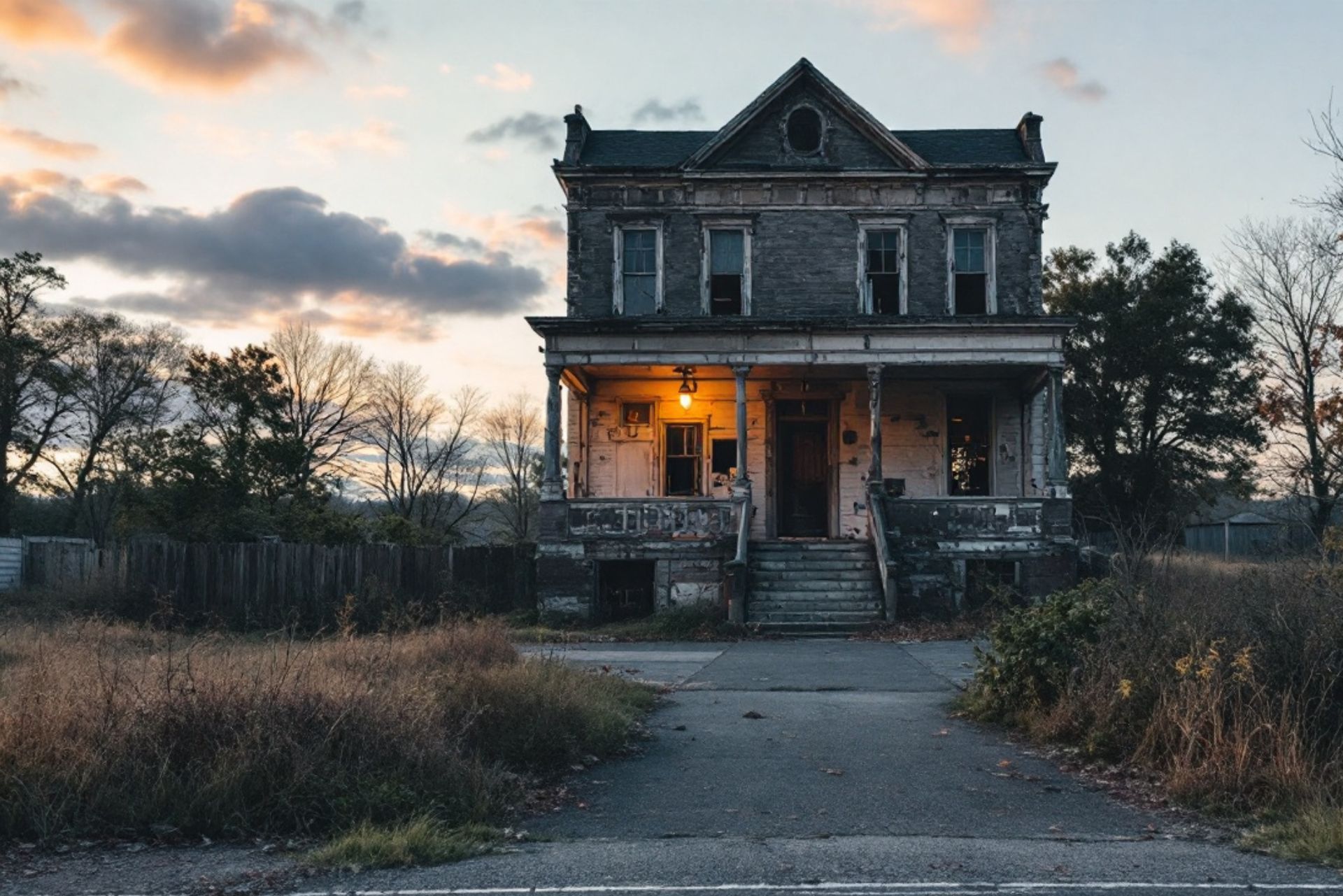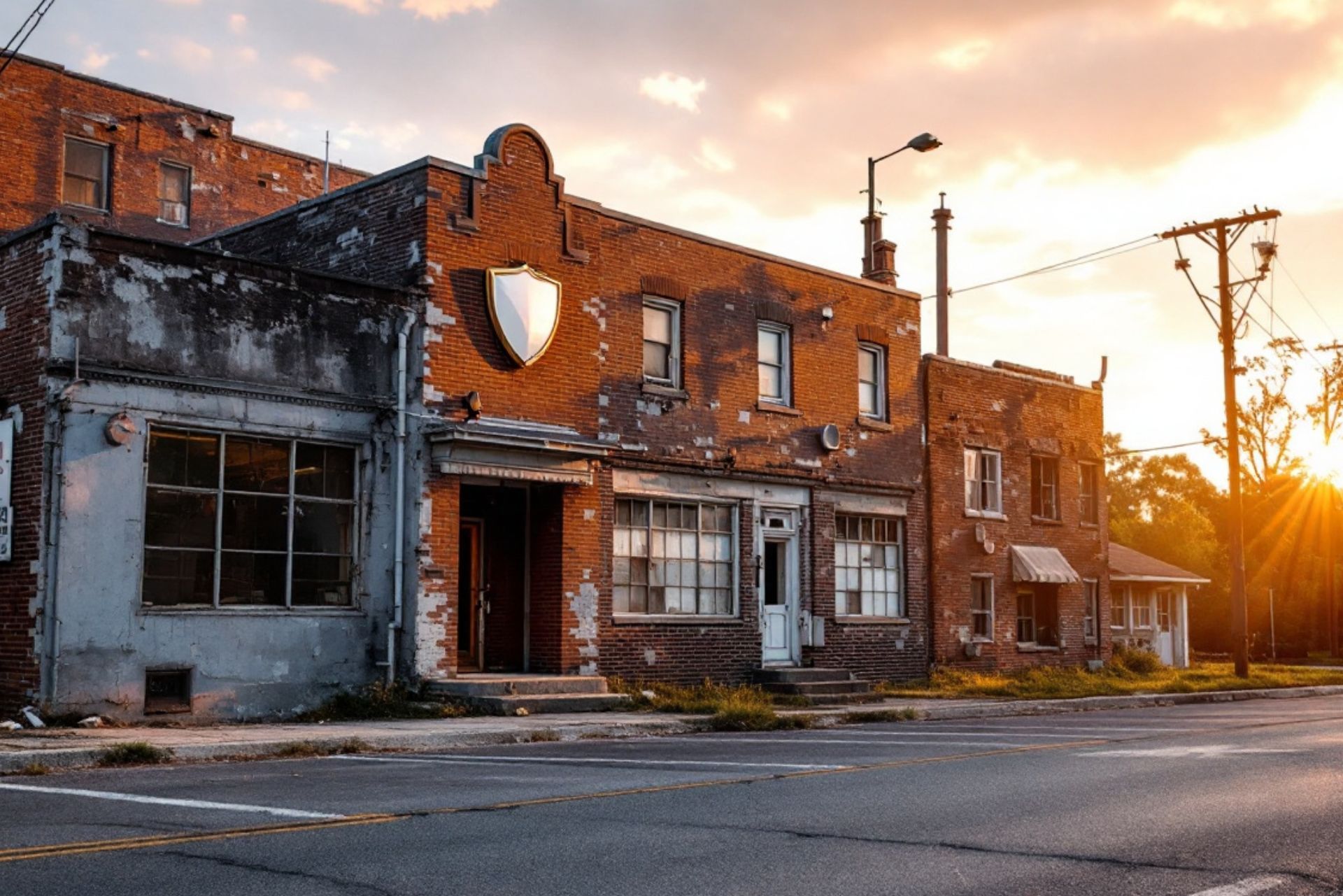Top 3 Recommended Business Policies
Index
Contact Us
When it comes to real estate, the significance of protecting your assets cannot be overstated. For property owners in Maryland with vacant buildings, understanding the ins and outs of vacant building insurance is essential. This article will cover everything you need to know about this niche insurance product, from definitions and regulations to costs and claims.
Understanding Vacant Building Insurance
Vacant building insurance is specifically tailored for properties that are unoccupied and not in use for an extended period. Unlike standard homeowners insurance, this type of policy addresses unique risks associated with vacant buildings, such as vandalism, theft, and structural damage.
Insurance providers recognize that vacant buildings present different hazards compared to their occupied counterparts. This is why vacant building insurance is crucial to protecting your investment while preventing potential liabilities. Knowing the ins and outs of this coverage is vital for every property owner.
Definition and Importance of Vacant Building Insurance
Vacant building insurance is designed to cover properties that are not occupied for more than a specified period, typically 30-60 days. It addresses the unique risks and vulnerabilities that vacant buildings face, such as higher chances of vandalism, fire risks, and unexpected weather damage.
Having this type of insurance helps mitigate risks and protects property owners from potential financial losses. For instance, if a pipe bursts in a vacant property, the damage could be extensive, leading to costly repairs. Vacant building insurance ensures that you are covered in such unfortunate situations. Additionally, many insurance policies can be customized to include coverage for specific risks, such as natural disasters or liability claims, further enhancing the protection for property owners during the vacancy period.
The Difference Between Vacant and Unoccupied Buildings
Understanding the difference between a vacant building and an unoccupied building is crucial for property owners. A vacant building refers to a property that is entirely devoid of any contents or personal belongings, making it fully uninhabitable.
Conversely, an unoccupied building may have some furnishings or be in a state of transition, with the owner still intending to return. Most insurance policies consider vacant properties to be at a higher risk, mandating the need for specific coverage. This distinction is important not only for insurance purposes but also for property management strategies. For instance, an unoccupied property may still be maintained to some degree, while a vacant property might require more extensive security measures, such as boarding up windows or installing surveillance systems, to deter potential threats.

The Specifics of Maryland Vacant Building Insurance
The cost of vacant building insurance can vary widely depending on several factors, such as location, property condition, and insurance history. Property owners should be prepared to evaluate these elements carefully when shopping for a policy.
Understanding the influence of these factors will help you gain insights into your potential insurance costs and assist you in making informed financial decisions regarding your vacant property. Additionally, it is crucial to stay updated on the local real estate market, as fluctuations can impact insurance rates and property values significantly.
Factors Affecting Insurance Rates
Several factors can impact the insurance rates for vacant buildings in Maryland, including:
- Location: Areas prone to crime or natural disasters may face higher premiums.
- Property Condition: Well-maintained buildings usually attract lower rates compared to dilapidated properties.
- Coverage Amount: The higher the coverage limit, the more expensive the premium.
- Length of Vacancy: Longer vacancy periods may lead to increased risk, affecting rates.
Moreover, the type of neighborhood can also play a significant role in determining insurance costs. For instance, properties located in urban areas with higher population densities might experience different risks compared to those in rural settings. Furthermore, the historical data of claims made in a specific area can influence the overall risk assessment by insurance providers, leading to variations in premium rates.
Ways to Lower Your Insurance Costs
Property owners can take several steps to help lower the costs associated with vacant building insurance. Some effective strategies include:
- Maintaining the property in good condition
- Installing security systems to deter vandalism
- Regularly monitoring the property, including checking for leaks or damages
- Combining policies for discounted rates
By implementing these preventative measures, property owners can secure lower insurance premiums while also preserving their investments. Additionally, engaging with local community initiatives or neighborhood watch programs can enhance security and may lead to further discounts on insurance premiums. Insurance companies often appreciate proactive measures taken by property owners to mitigate risks, which can be reflected in more favorable policy terms.
Another effective approach is to consult with
insurance agents who specialize in vacant property insurance. These professionals can provide tailored advice and help identify specific discounts or coverages that may not be immediately apparent. They can also assist in comparing policies from different providers to ensure you are getting the best value for your insurance needs. Understanding the nuances of various policies can empower property owners to make choices that not only save money but also adequately protect their vacant properties against unforeseen events.
The Cost of Vacant Building Insurance in Maryland
The cost of vacant building insurance can vary widely depending on several factors, such as location, property condition, and insurance history. Property owners should be prepared to evaluate these elements carefully when shopping for a policy.
Understanding the influence of these factors will help you gain insights into your potential insurance costs and assist you in making informed financial decisions regarding your vacant property. Additionally, it is crucial to stay updated on the local real estate market, as fluctuations can impact insurance rates and property values significantly.
Factors Affecting Insurance Rates
Several factors can impact the insurance rates for vacant buildings in Maryland, including:
- Location: Areas prone to crime or natural disasters may face higher premiums.
- Property Condition: Well-maintained buildings usually attract lower rates compared to dilapidated properties.
- Coverage Amount: The higher the coverage limit, the more expensive the premium.
- Length of Vacancy: Longer vacancy periods may lead to increased risk, affecting rates.
Moreover, the type of neighborhood can also play a significant role in determining insurance costs. For instance, properties located in urban areas with higher population densities might experience different risks compared to those in rural settings. Furthermore, the historical data of claims made in a specific area can influence the overall risk assessment by insurance providers, leading to variations in premium rates.
Ways to Lower Your Insurance Costs
Property owners can take several steps to help lower the costs associated with vacant building insurance. Some effective strategies include:
- Maintaining the property in good condition
- Installing security systems to deter vandalism
- Regularly monitoring the property, including checking for leaks or damages
- Combining policies for discounted rates
By implementing these preventative measures, property owners can secure lower insurance premiums while also preserving their investments. Additionally, engaging with local community initiatives or neighborhood watch programs can enhance security and may lead to further discounts on insurance premiums. Insurance companies often appreciate proactive measures taken by property owners to mitigate risks, which can be reflected in more favorable policy terms.
Another effective approach is to consult with insurance agents who specialize in vacant property insurance. These professionals can provide tailored advice and help identify specific discounts or coverages that may not be immediately apparent. They can also assist in comparing policies from different providers to ensure you are getting the best value for your insurance needs. Understanding the nuances of various policies can empower property owners to make choices that not only save money but also adequately protect their vacant properties against unforeseen events.
How to Apply for Vacant Building Insurance in Maryland
Applying for vacant building insurance involves gathering specific documentation and information to ensure a smooth process. Understanding what is required can help facilitate quicker approvals.
The application process typically requires prospective policyholders to be prepared with all necessary documents to avoid delays in obtaining coverage.
Necessary Documentation and Information
When applying, you should gather the following documents:
- Proof of ownership for the property
- Details about the building's condition
- Information on renovation plans (if applicable)
- Previous insurance policies and claims history
All this information helps insurers evaluate risk accurately and determine appropriate coverage options. Additionally, it may be beneficial to include photographs of the property that highlight its current state, as this visual evidence can support your application and provide insurers with a clearer understanding of the building's condition. Having a detailed description of any security measures in place, such as alarm systems or regular maintenance checks, can also positively influence the insurer's assessment.
The Application Process Explained
The application process typically involves several steps:
- Research and identify suitable insurance providers.
- Fill out an application form with accurate information.
- Submit required documents for evaluation.
- Review the policy options and terms presented by the insurer.
- Finalize your choice and make the premium payment.
Efficiently navigating the application process can lead to obtaining coverage in less time, allowing property owners to focus on other aspects of their investment. It's also advisable to consult with an insurance agent who specializes in vacant property coverage, as they can provide valuable insights and help you understand the nuances of different policies. Furthermore, being aware of any local regulations or requirements specific to Maryland can ensure that you are fully compliant, which may also influence your insurance options and premiums.

Dealing with Claims and Disputes
Even with the best planning, situations may arise where property owners need to file a claim or resolve a dispute regarding their vacant building insurance. Being prepared for these scenarios can make the process smoother.
Knowing the steps involved in filing claims and how to handle disputes can greatly influence the outcomes of these situations, helping property owners to protect their interests.
Filing a Claim for a Vacant Building
When damage occurs at a vacant property, timely filing of a claim is essential. To file a claim, property owners should:
- Document the damage with photographs and detailed descriptions.
- Contact their insurance provider as soon as possible.
- Fill out any claim forms provided by the insurer.
- Present any additional documentation required.
Quick action can help expedite the claims process, ensuring that repairs can begin sooner rather than later. Additionally, property owners should keep a record of all communications with their insurance company, including dates, times, and the names of representatives spoken to. This documentation can prove invaluable if disputes arise later in the process, providing a clear timeline and context for any claims made.
Resolving Insurance Disputes in Maryland
If a dispute arises regarding your coverage or claims, it is important to address it proactively. Steps to consider include:
- Initially, attempt to resolve the issue directly with the insurance provider through clear communication.
- Seek mediation services if a resolution cannot be achieved independently.
- If all else fails, consider pursuing legal action as a last resort.
Understanding your rights and the terms of your policy can provide a solid foundation in resolving disputes effectively. Furthermore, property owners should familiarize themselves with the Maryland Insurance Administration, which offers resources and assistance for consumers facing insurance-related issues. Utilizing these resources can provide additional support and guidance, helping to navigate the complexities of insurance disputes and ensuring that property owners are not left without recourse in challenging situations.
Frequently Asked Questions about Maryland Vacant Building Insurance
Property owners often have common questions and concerns regarding vacant building insurance. Addressing these can lead to a better understanding of the topic and ensure informed decisions.
By exploring some frequently asked questions, property owners can gain insights into the nuances of this specialized insurance coverage.
Common Concerns and Misconceptions
Many property owners might mistakenly believe that standard homeowners insurance will cover vacant properties, which is not the case. Others might fear that obtaining insurance for vacant buildings is too complex or expensive.
Understanding the specific considerations and steps involved can help alleviate these concerns, making property owners feel more confident in pursuing coverage. For instance, it’s important to recognize that vacant properties are often at a higher risk for vandalism, theft, and other liabilities, which is why specialized coverage is necessary. Additionally, some policies may offer tailored options that can include coverage for specific risks associated with vacant buildings, such as fire damage or liability claims, helping to protect your investment more comprehensively.
Expert Answers to Your Questions
Consulting with an insurance expert or agent can clarify many queries you may have. Experts can provide personalized insights based on your property type and location, ensuring you make an informed decision regarding coverage.
It's always beneficial to engage with experienced professionals to help navigate your unique insurance needs in Maryland, providing peace of mind as a property owner. Furthermore, many agents can assist in comparing different policies and premiums, helping you find the best fit for your budget and coverage requirements. They may also offer advice on risk mitigation strategies, such as regular property inspections and maintenance, which can not only enhance the safety of your vacant building but may also lead to lower insurance premiums over time.
For over 40 years D.H. Lloyd & Associates has provided commercial insurance solutions covering multiple facet of business risk.
QUICK LINKS
CONTACT US
Phone:
202-223-1506
Email: contactus@dhlloyd.com
Address: 1625 K St NW, Washington, DC 20006, United States
All Rights Reserved | D.H. Lloyd & Associates | Privacy Policy | Legal Disclaimer | Sitemap | Built & SEO'd by Convirtue

